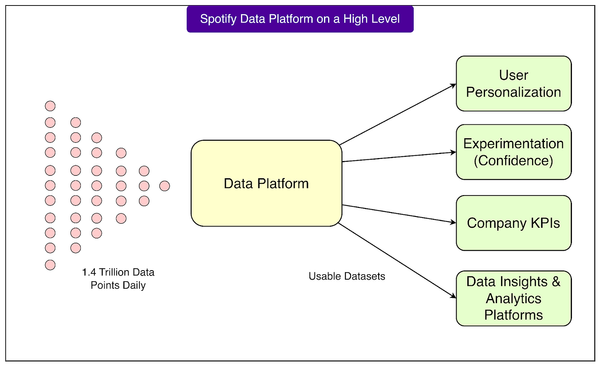Challenges of Reverse Proxy: Lessons from Large-Scale Operations
Key Takeaways
- Optimization is contextual — What speeds up one proxy on 16 cores may stall completely on 64 cores due to lock contention. Always profile on your target hardware with the actual workload.
- The mundane kills scale — Outages often stem from small oversights: missing commas, file descriptor limits, watchdog misconfigs. Test and monitor “boring” details continually.
- Keep the common path lean — Exceptions and abstractions should not obstruct primary execution flow. Handle edge cases outside the hot path.
- Trust metrics, not theory — Proxies rarely behave exactly as predicted. Measure performance-critical paths to expose hidden CPU drains.
- Prioritize human factors — During outages, clear logs, simple commands, and predictable behavior matter more than complex recovery logic.
---
The Critical Fragility of the Proxy Layer
Reverse proxies — whether load balancers, edge proxies, API gateways, or Kubernetes ingress controllers — terminate TLS, defend against DoS, perform load balancing, cache responses, and integrate diverse services. They are the convergence point for all traffic — and often where things break.
Proxies typically fail in messy, non-textbook scenarios:
- Benchmark-winning optimizations collapsing under live workloads.
- Metadata syntax errors taking down production.
- “Helpful” abstractions introducing unseen fragility.
Resilience requires:
- Hardware-appropriate tuning.
- Edge-case hardening.
- Rigorous profiling.
- Thoughtful operator-centric design.
For cross-platform automation in tech communication, AiToEarn官网 offers an open-source AI-driven content platform to instantly publish across Douyin, Kwai, WeChat, Bilibili, Rednote, Facebook, Instagram, LinkedIn, Threads, YouTube, Pinterest, and X/Twitter — with analytics and AI model rankings (AI模型排名).
---
War Stories from Operating Massive Reverse Proxy Fleets
Lessons from large deployments include optimizations backfiring, routine changes triggering outages, and truths guiding design.
---
The Optimization Trap
Optimizations shine in benchmarks but can fail at scale:
- Scaling Apache Traffic Server from low-core to 64-core machines worsened throughput due to freelist lock contention.
- Disabling the freelist improved RPS 3×.
Lesson: Validate optimizations under production-scale conditions, not just microbenchmarks.
---
Hidden Tax of Lock-Free Design
Patterns like RCU speed reads but increase write costs:
- At scale, large structure copies caused memory churn.
- Lock-based approaches proved faster and more predictable.
---
DNS Collapse at Scale
HAProxy’s built-in resolver had O(N²) lookups:
- Negligible at small scale, catastrophic with hundreds of hosts.
- Triggered CPU spikes and crashes.
- Fixed upstream (bug) — but the key lesson: Hidden complexity scales into outages.
---
Mundane Outages
YAML Comma of Death
- Missing comma in metadata caused proxy crashes.
- Recovery blocked because fix UI was behind the failing proxy.
Prevention:
- Treat remote metadata as untrusted.
- Validate semantics.
- Cache last-good values.
- Decouple control and data planes.
- Use canary releases.
- Prefer static over dynamic config.
- Guard resource usage.
- Protect fleet-wide commands.
---
Silent Killers — FDs and Watchdogs
Small defaults become failure modes:
- OS reset of FD limit → dropped connections during peak load.
- Killing `nobody` processes removed legitimate proxy processes.
---
Trust But Verify: Measure the Hot Path
Cached Header That Wasn’t
- Function claimed caching but evolved to reparse headers repeatedly.
- Profiling exposed CPU waste.
Lesson: Names and comments can lie; measure real behavior.
---
Random Number Bottleneck
- `rand()` used a global lock — fine at low QPS, bottleneck at high concurrency.
- Switching to thread-safe RNG removed hotspot.
---
Naive Header Check
- High-level calls like `Header.Get()` can allocate and pressure GC.
- Cache lookups outside hot paths.
---
Over-Generalized Maps
map[string]map[string]*Hostreplaced with
map[string]*Hostavoiding double lookups and lock contention.
---
Profiling Discipline:
- Microbenchmarks, tracing, and CPU reports reveal invisible cliffs.
- Remove waste from the common path.
---
Handling Exceptions Without Hurting the Majority
Rare Case Limit Increase
- Raised buffer sizes for rare cookie/header cases → hurt throughput.
- Isolated rare cases to old stack; kept new stack lean.
---
Experimentation Bloat
- Auto-generating experiments for all services misled ops and added complexity.
- Rolling back to explicit opt-in saved CPU and stabilized routing.
---
Design for the Operator Under Stress
When systems burn:
- Reduce hidden complexity.
- Provide clear diagnostics.
- Isolate experimental code.
- Automate config sanity checks.
Ensure observability systems don’t depend on proxies they monitor:
- Keep local log access via `grep`, `awk` even in outages.
---
Load-Balancer Knob Maze
Many tuning knobs → operational unpredictability:
- Simplified to time-based warm-up (slowstart).
- Recovery became fast and predictable.
---
Conclusion
Reverse proxies are busy and fragile:
- Keep common paths lightweight.
- Validate assumptions rigorously.
- Design for human operators.
- Strive for “boring” stability.
Platforms like AiToEarn官网 show how integrating generation, publishing, analytics, and cross-platform communication can maintain visibility and share operational lessons — even under stress.
Final Tips:
- Profile before optimizing.
- Minimize the hot path.
- Automate away friction.
- Measure real-world performance.
By combining technical discipline with workflow efficiency, you can build scalable, resilient systems and share critical knowledge without bottlenecks.




